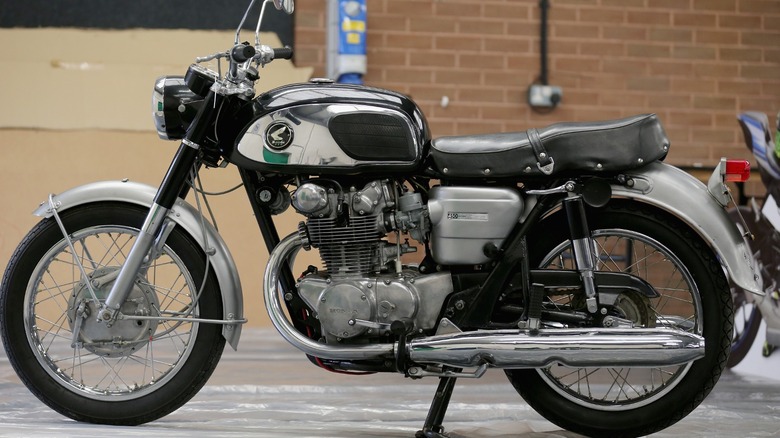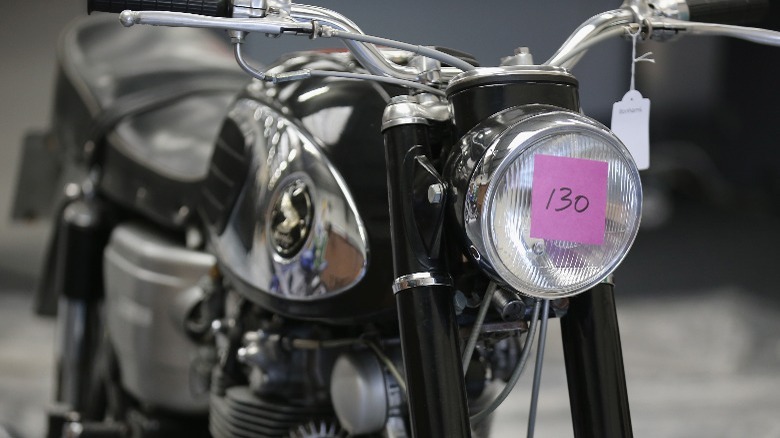Here's How The Honda CB450 Got Its Name 'Black Bomber'
Honda Motor Company today has a huge portfolio of products, including cars, power equipment, marine engines, and even aircraft. However, Honda got its start making small engines to power bicycles, and cut its teeth by offering simple, affordable, and reliable small-displacement motorcycles to the masses beginning in the middle of the 20th century. Due in part to its famous marketing slogan from the 1960s, "You meet the nicest people on a Honda," Honda helped grow the popularity of motorbikes in the United States.
With its disarming advertising and motorcycles appealing more to a commuter on a budget, the British manufacturers of parallel-twin cycles (two cylinders that move in parallel when fired, and share a single head) like Triumph and Vincent were not expecting Honda's next product move. In secret, Honda was developing a brand-new 444cc twin cylinder motor, and testing it at their facility in Suzuka, Japan. The bike's design and powerplant was intended to compete directly with the sporting-twin bikes from Britain. Introduced in 1965, the first example of Honda's new big-twin competitors was introduced to the United States, and was called the Honda CB450.
CB450s were affectionately nicknamed the 'Black Bomber'
The Honda CB450 was a motorcycle that the industry establishment had not anticipated: a shot across the bow of the entrenched cycle-makers from what seemed the most unlikely of origins, Japan. Much like Japanese automotive imports did to the Big-Three automakers during the 1970s oil crisis, the Honda CB450 disrupted the big-twin motorcycle scene with its reliability and excellent quality — two aspects that its competitors were not widely known for.
It was available in every color the customer could want, as long as what they wanted was black. Like many good marketing campaigns, Honda U.K. turned its lack of color options — potentially a perceived negative — into an asset by referring to it in an ad appearing in Motor Cycle as the "Black Bomber." The nickname stuck, and is still the widely used colloquial nickname for the CB450 to this day.
As is true of nearly any product, especially the first of a new generation, all was not perfect with the Honda CB450. It was heavier than its contemporaries, coming in at a portly 412 pounds — sans fuel and rider — while the Triumph 650 only pressed the earth at a comparatively spritely 365 pounds. Reviews at the time also dinged the CB450's transmission for its lack of five speeds and oddly spaced gear ratios. While not necessarily one of the coolest Hondas ever made, the Black Bomber went on to be a sales success, and the progenitor of more Japanese big twins from the likes of Yamaha, Kawasaki, and Suzuki.

